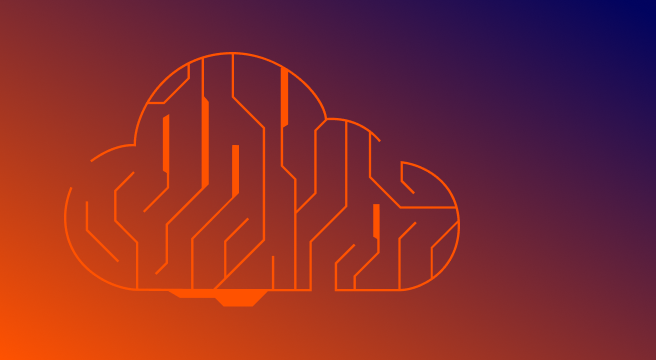Zero trust in the cloud
Published | June 30, 2025 |
Identity, segmentation and dynamic access
The biggest threat to your cloud isn't always from the outside. In a cloud world without traditional perimeters, learn why trusting nothing and verifying everything is your path to true cloud security.
Expose key concepts
- What is Zero trust in the Cloud?
- Why traditional perimeter defenses don’t work in the cloud
- Identity: The foundation of cloud Zero trust
- Segmentation across cloud-native boundaries
- Dynamic access enforcement in real time
- How cloud security platforms enforce zero trust
- Zero trust supports compliance and agility
- Zero trust in the cloud FAQ
- Zero trust resources
- Zero trust products
What is Zero trust in the Cloud?
Zero trust is a cloud security approach where you verify every user and device every time they try to access something, instead of implicitly trusting them once they're inside your network.
Zero trust denies a request if it does not meet the defined security policies or the system cannot verify or authenticate it.
With zero trust in the cloud, every access decision relies on continuous verification, combining user identity, device posture, resource sensitivity and behavior. It is fundamental in the borderless, dynamic reality of the cloud-native world.
Workloads talk across regions, cloud accounts and platforms. Developers spin up services outside traditional controls. Identities carry entitlements that reach far beyond their scope.
Without strong segmentation and real-time verification, attackers move freely. A zero trust strategy helps you regain control, even in elastic, multi-cloud infrastructure.
Why traditional perimeter defenses don’t work in the cloud
A legacy security model assumes that once you’re in, it trusts you.
But in the cloud, there’s no perimeter. You’re dealing with decentralized services, ephemeral workloads and identities that operate at massive scale.
For example, a single over-permissioned service account could touch sensitive storage, admin APIs and cross-cloud resources, and your system might never flag it.
Zero trust flips that logic. It removes implicit trust and evaluates every action in real time. That means verifying identity claims, checking device posture, analyzing privilege scope and monitoring behavioral baselines. It dynamically allows the right access under the right conditions.
Identity: The foundation of cloud Zero trust
Identity is the foundation of zero trust in the cloud.
You must verify every service, user and machine account before granting access. But this gets tricky across AWS IAM, Azure Active Directory, GCP service accounts and third-party tools.
Cloud infrastructure entitlement management (CIEM) plays a key role. It maps every identity to its entitlements, flags unused or excessive permissions and identifies toxic combinations, like an idle role with encryption and storage privileges.
With accurate entitlement data, you can enforce least privilege and build dynamic access rules that reflect real-world use.
Segmentation across cloud-native boundaries
Segmentation limits lateral movement. In a zero-trust cloud model, this means restricting which resources can communicate and under what conditions.
Tools like Kubernetes network policies, virtual private clouds (VPCs) and identity-aware proxies all help define boundaries.
But segmentation isn’t just about static firewalls. You need context: what data the workload handles, who or what accesses it and whether behavior aligns with expected patterns.
Dynamic segmentation lets you isolate high-risk resources, restrict access during elevated events and reduce the blast radius of any breach.
Dynamic access enforcement in real time
Zero trust isn’t static. Your access decisions should adapt to changing context, like geolocation, time of day, workload behavior or current risk posture.
This is where just-in-time (JIT) access shines.
Instead of granting standing permissions, users and services request temporary access with a defined scope and duration. You can also use behavioral analytics and cloud detection and response (CDR) to automatically flag anomalies, revoke access, or escalate reviews.
How cloud security platforms enforce zero trust
A strong cloud security solution supports zero trust by integrating identity management, workload context and policy enforcement into one platform.
That includes:
- Continuous entitlement analysis via CIEM
- Runtime monitoring of workloads and data access
- Policy-as-code for enforcing guardrails through infrastructure as code and CI/CD
- Exposure graphing to map how identities, services and data connect
- Automated remediation for identity and configuration drift
These tools work together to verify access, block risky paths and maintain compliance.
Zero trust supports compliance and agility
Frameworks like NIST 800-207, FedRAMP and ISO/IEC 27001 encourage zero trust principles, but enforcing them is complicated in cloud environments.
A dynamic, identity-centric model helps meet those requirements without building rigid controls that slow teams down. You get better audit logs, tighter access controls and fewer surprises during reviews.
At the same time, developers and ops teams gain the freedom to move fast while knowing security policies adjust based on behavior, not fixed roles or IP ranges.
Zero trust in the cloud FAQ
What is zero trust in cloud computing?
Zero trust in cloud computing means you don't automatically trust anything in your cloud environment. You verify everything every time, no matter what. Unlike traditional perimeter-based security, it assumes no user, device or application is inherently trustworthy, even if it's already inside your network. It rigorously verifies every access request to cloud resources or data, authenticates it, and authorizes it based on real-time context before granting access.
Why is zero trust essential for modern cloud security?
Zero trust is imperative for modern cloud security because traditional network perimeters don’t exist in distributed cloud environments. Cloud-native architectures, multi-cloud deployments and dynamic workloads no longer confine assets and data. This framework can help you protect sensitive data and prevent lateral movement by enforcing strict access control and continuous identity verification for every user and workload, regardless of location.
How does zero trust enhance cloud data protection?
Zero trust significantly supports cloud data protection by controlling access for authorized users and devices. It enforces granular, least privilege access, meaning individuals and systems only get the exact permissions they need for a particular task, for a limited time. This continuous validation of identity, device posture and data sensitivity dramatically reduces the attack surface and decreases the chance of unauthorized data access or exfiltration in cloud environments.
Can I apply zero trust across multi-cloud and hybrid cloud environments?
Yes. Zero trust is ideally suited for multi-cloud and hybrid cloud environments. Its "identity-centric" and "resource-centric" approach can help you apply consistent security policies across diverse cloud providers and on-premises infrastructure. By centralizing access control and continuous verification, zero trust helps eliminate security gaps often arising from disparate tools and siloed visibility in complex, hybrid cloud computing landscapes.
Check out our zero trust resources to learn more about verifying trust at every interaction stage across your network and systems.
Zero trust resources
Zero trust products
Cybersecurity news you can use
- Tenable Cloud Security
- Tenable One

